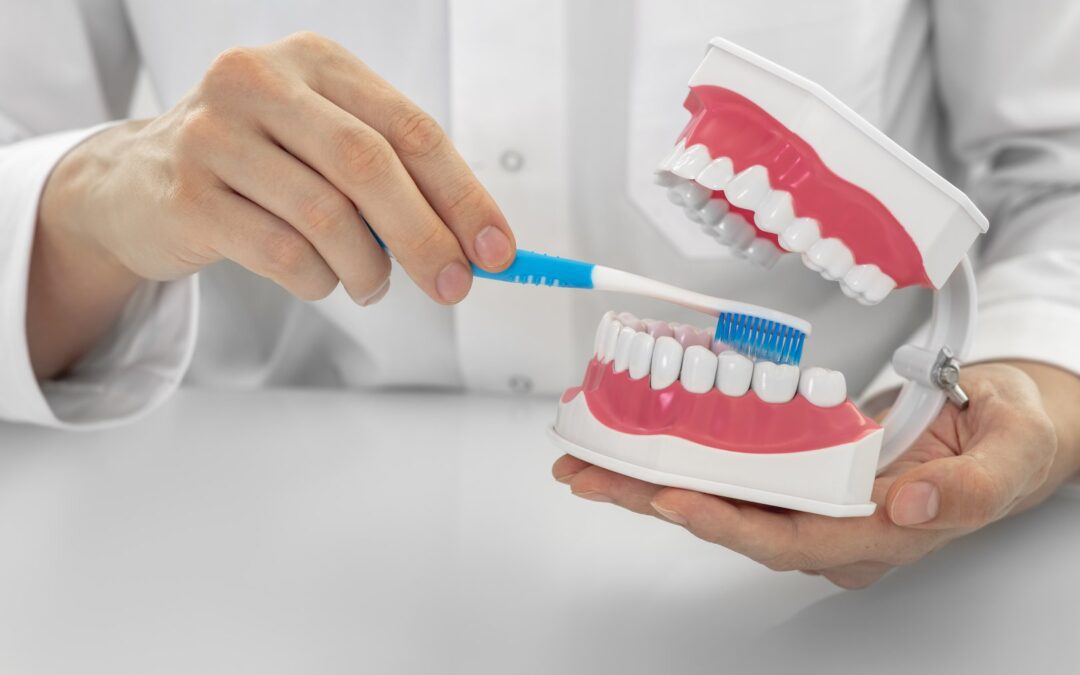Regular dental cleanings are essential for maintaining optimal oral health. While brushing and flossing at home is crucial, they’re not enough to remove all the plaque and tartar buildup that can lead to tooth decay and gum disease. A professional dental cleaning provides a deep clean that removes all the buildup and ensures your teeth and gums remain healthy.
If you’re due for a dental cleaning or curious about what the process involves, read on to learn more.
Step-by-Step Guide to a Dental Cleaning
-
Physical Exam
Before starting the cleaning, your dentist or hygienist will perform a physical exam of your mouth. This involves checking for any potential issues such as cavities, gum disease, or oral cancer. By addressing these issues early, your dentist can provide preventative care to ensure your oral health remains optimal.
-
Plaque and Tartar Removal
Plaque and tartar buildup are the main culprits of tooth decay and gum disease. During a dental cleaning, your dentist or hygienist will use special tools to remove all the plaque and tartar from your teeth and gum line. They will also clean your teeth and remove any buildup that’s hard to reach with a toothbrush.
-
Teeth Polishing
After removing all the plaque and tartar, your dentist or hygienist will polish your teeth. This involves using a special paste and a rotating brush to remove any surface stains and leave your teeth feeling smooth and clean.
-
Fluoride Treatment
A fluoride treatment is often the last step in dental cleaning. This involves applying a fluoride gel or varnish to your teeth to help protect them against cavities and tooth decay. The fluoride treatment is especially important for those at high risk of tooth decay, such as children and those with weakened enamel.
Why Professional Oral Hygiene is Important
While brushing and flossing at home is crucial for maintaining healthy teeth and gums, they’re not enough to remove all the buildup that can lead to tooth decay and gum disease. A professional dental cleaning provides a deep clean that removes all the buildup and ensures your teeth and gums remain healthy.
Regular dental cleanings also help prevent more serious oral health issues. For example, if left untreated, gum disease can lead to tooth loss and even bone damage. By visiting your dentist for regular cleanings, you can catch gum disease early and prevent these more serious issues from occurring.
Additionally, a professional dental cleaning can provide other benefits such as fresher breath and a brighter smile. The polishing step of the cleaning removes surface stains that can dull your smile, while the fluoride treatment helps protect against bad breath.
How Often Should You Get a Dental Cleaning?
Most dentists recommend getting a dental cleaning every six months. However, some patients may require more frequent cleanings depending on their oral health needs. Your dentist can help determine how often you should get a cleaning based on your specific situation.
Conclusion
Dental cleaning is a crucial aspect of maintaining optimal oral health. By removing plaque and tartar buildup, polishing your teeth, and applying a fluoride treatment, a dental cleaning provides a deep clean that’s essential for healthy teeth and gums. Regular dental cleanings also help prevent more serious oral health issues such as gum disease and tooth loss. If you’re due for a dental cleaning, don’t hesitate to schedule an appointment with your dentist today.
